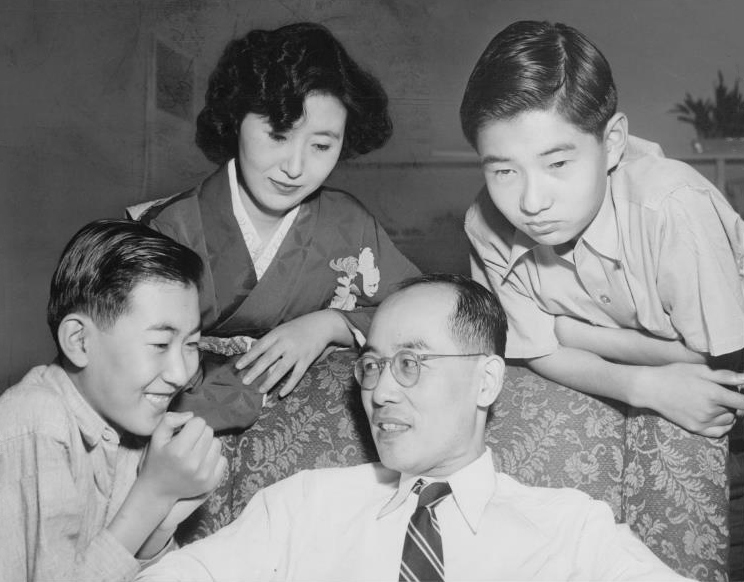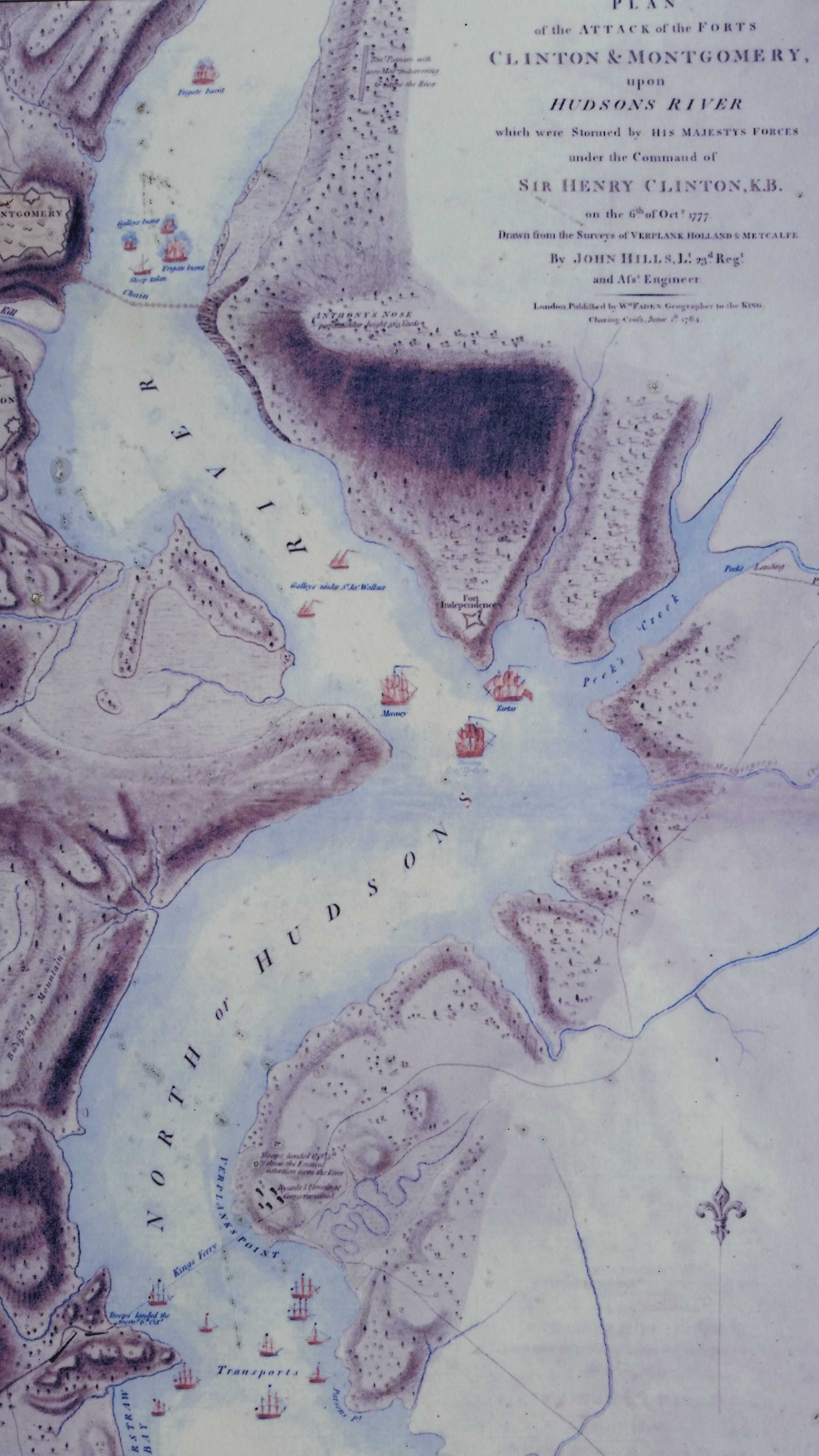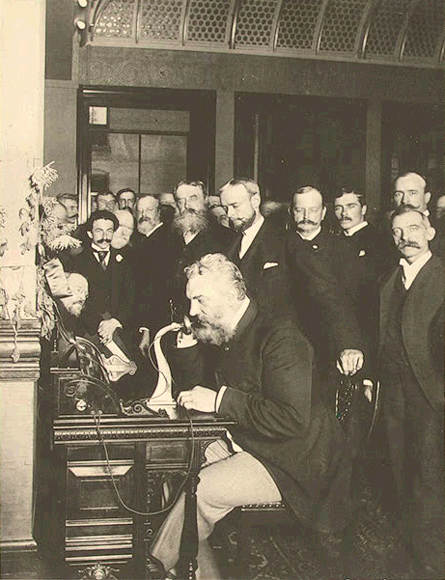|
Oldstone Conference
The Oldstone Conference of 11 to 14 April 1949 was the third of three postwar conferences held to discuss quantum physics; arranged for the National Academy of Sciences by J. Robert Oppenheimer, who was again chairman. It followed the Shelter Island Conference of 1947 and the Pocono Conference of 1948. There were 24 participants; new participants were Robert Christie, Freeman Dyson (whose writings explained Feynman’s ideas), George Placzek, and Hideki Yukawa. Held at Oldstone-on-the-Hudson in Peekskill, New York, the main talking-point was Richard Feynman Richard Phillips Feynman (; May 11, 1918 – February 15, 1988) was an American theoretical physicist, known for his work in the path integral formulation of quantum mechanics, the theory of quantum electrodynamics, the physics of the superfl ...’s approach to quantum electrodynamics (QED); Feynman was now (at 30) the leading physicist of his generation. Griffin (1997) p. 118 References * * Physics conferences ... [...More Info...] [...Related Items...] OR: [Wikipedia] [Google] [Baidu] |
United States National Academy Of Sciences
The National Academy of Sciences (NAS) is a United States nonprofit, non-governmental organization. NAS is part of the National Academies of Sciences, Engineering, and Medicine, along with the National Academy of Engineering (NAE) and the National Academy of Medicine (NAM). As a national academy, new members of the organization are elected annually by current members, based on their distinguished and continuing achievements in original research. Election to the National Academy is one of the highest honors in the scientific field. Members of the National Academy of Sciences serve '' pro bono'' as "advisers to the nation" on science, engineering, and medicine. The group holds a congressional charter under Title 36 of the United States Code. Founded in 1863 as a result of an Act of Congress that was approved by Abraham Lincoln, the NAS is charged with "providing independent, objective advice to the nation on matters related to science and technology. ... to provide scie ... [...More Info...] [...Related Items...] OR: [Wikipedia] [Google] [Baidu] |
Shelter Island Conference
The first Shelter Island Conference on the Foundations of Quantum Mechanics was held from June 2–4, 1947 at the Ram's Head Inn in Shelter Island, New York. Shelter Island was the first major opportunity since Pearl Harbor and the Manhattan Project for the leaders of the American physics community to gather after the war. As Julian Schwinger would later recall, "It was the first time that people who had all this physics pent up in them for five years could talk to each other without somebody peering over their shoulders and saying, 'Is this cleared?'" The conference, which cost $850, was followed by the Pocono Conference of 1948 and the Oldstone Conference of 1949. They were arranged with the assistance of J. Robert Oppenheimer and the National Academy of Sciences (NAS). Later Oppenheimer deemed Shelter Island the most successful scientific meeting he had ever attended; and as Richard Feynman recalled to Jagdish Mehra in April 1970: "There have been many conferences in the wo ... [...More Info...] [...Related Items...] OR: [Wikipedia] [Google] [Baidu] |
Pocono Conference
The Pocono Conference of 30 March to 2 April 1948 was the second of three postwar conferences held to discuss quantum physics; arranged by Robert Oppenheimer for the National Academy of Sciences. It followed the Shelter Island Conference of 1947 and preceded the Oldstone Conference of 1949. Held at the Pocono Manor Inn in the Pocono Mountains of Pennsylvania, midway between Scranton, Pennsylvania and the Delaware Water Gap, 28 physicists attended. New participants were Niels Bohr, Aage Bohr, Paul Dirac, Walter Heitler, Eugene Wigner and Gregor Wentzel; while Kramers, MacInnes, Nordsieck, Pauling and Van Vleck who were at the Shelter Island Conference were absent. Julian Schwinger gave a day-long presentation of his developments in quantum electrodynamics (QED), the ''last great fling of the old way of doing quantum mechanics''. Richard Feynman offered his version of quantum electrodynamics, introducing Feynman diagrams for the first time; it was unfamiliar and no-one followe ... [...More Info...] [...Related Items...] OR: [Wikipedia] [Google] [Baidu] |
Robert Christie (physicist) (1924–2009), American racecar driver
{{hndi ...
Robert or Bob Christie may refer to: *Robert Christie (actor) (1913–1996), Canadian actor and director *Robert Christie (footballer) (1865–1918), Scottish football (soccer) player *Robert Christie (Ontario politician), member of the Ontario provincial parliament, 1867–1874 *Robert Christie (Lower Canada politician) (1787–1856), historian and political figure from the Gaspé region of Quebec * Robert Christie Jr. (1824–1875), New York politician * Bob Christie (announcer), Scottish TV and radio announcer * Bob Christie (film director), Canadian documentary film director * Bob Christie (politician) (1925–2020), former Australian politician *Bob Christie (racing driver) Bob Christie (April 4, 1924 – June 1, 2009) was an American racecar driver. Christie raced in the USAC Championship Car series in the 1956-1963 seasons, with 15 career starts, including every Indianapolis 500 race in that span. He finishe ... [...More Info...] [...Related Items...] OR: [Wikipedia] [Google] [Baidu] |
Freeman Dyson
Freeman John Dyson (15 December 1923 – 28 February 2020) was an English-American theoretical physicist and mathematician known for his works in quantum field theory, astrophysics, random matrices, mathematical formulation of quantum mechanics, condensed matter physics, nuclear physics, and engineering. He was Professor Emeritus in the Institute for Advanced Study in Princeton and a member of the Board of Sponsors of the Bulletin of the Atomic Scientists. Dyson originated several concepts that bear his name, such as Dyson's transform, a fundamental technique in additive number theory, which he developed as part of his proof of Mann's theorem; the Dyson tree, a hypothetical genetically engineered plant capable of growing in a comet; the Dyson series, a perturbative series where each term is represented by Feynman diagrams; the Dyson sphere, a thought experiment that attempts to explain how a spacefaring, space-faring civilization would meet its energy requirements with ... [...More Info...] [...Related Items...] OR: [Wikipedia] [Google] [Baidu] |
George Placzek
George Placzek (; September 26, 1905 – October 9, 1955) was a Moravian physicist. Biography Placzek was born into a wealthy Jewish family in Brünn, Moravia (now Brno, Czech Republic), the grandson of Chief Rabbi Baruch Placzek.PDF He studied physics in Prague and Vienna. In the 1930s, Placzek was known as an adventurous person with sharp sense of humor, a tireless generator of novel physics ideas which he generously shared with his colleagues. The scope of Placzek's pilgrimage around the world's physics centres in the 1930s was unique among his colleagues. He worked with Hans Bethe, Edward Teller, Rudolf Peierls, Werner Heisenberg, Victor Weisskopf, Enrico Fermi, Niels Bohr, Lev Landau, Edoardo Amaldi, Emilio Segrè, Otto Frisch, Leon van Hove, and many other prominent physicists of his time. His wife, Els Placzek () was an ex-wife of physicist Hans von Halban. He lost all his relatives to Holocaust, casting a tragic shadow on his life. Placzek's major areas of scientific ... [...More Info...] [...Related Items...] OR: [Wikipedia] [Google] [Baidu] |
Hideki Yukawa
was a Japanese theoretical physicist and the first Japanese Nobel laureate for his prediction of the pi meson, or pion. Biography He was born as Hideki Ogawa in Tokyo and grew up in Kyoto with two older brothers, two older sisters, and two younger brothers. He read the Confucian ''Doctrine of the Mean'', and later Lao-Tzu and Chuang-Tzu. His father, for a time, considered sending him to technical college rather than university since he was "not as outstanding a student as his older brothers". However, when his father broached the idea with his middle school principal, the principal praised his "high potential" in mathematics and offered to adopt Ogawa himself in order to keep him on a scholarly career. At that, his father relented. Ogawa decided against becoming a mathematician when in high school; his teacher marked his exam answer as incorrect when Ogawa proved a theorem but in a different manner than the teacher expected. He decided against a career in experimental physics ... [...More Info...] [...Related Items...] OR: [Wikipedia] [Google] [Baidu] |
Peekskill, New York
Peekskill is a city in northwestern Westchester County, New York, United States, from New York City. Established as a village in 1816, it was incorporated as a city in 1940. It lies on a bay along the east side of the Hudson River, across from Jones Point in Rockland County. The population was 25,431 at the 2020 US census, an increase over 23,583 during the 2010 census. It is the third largest municipality in northern Westchester County, after the towns of Cortlandt and Yorktown. The area was an early American industrial center, primarily for iron plow and stove products. The Binney & Smith Company, now named Crayola LLC and makers of Crayola products, is linked to the Peekskill Chemical Company founded by Joseph Binney at Annsville in 1864, and succeeded by a partnership by his son Edwin and nephew Harold Smith in 1885. The well-publicized Peekskill Riots of 1949 involved attacks and a lynching-in-effigy occasioned by Paul Robeson's benefit concerts for the Civil R ... [...More Info...] [...Related Items...] OR: [Wikipedia] [Google] [Baidu] |
Richard Feynman
Richard Phillips Feynman (; May 11, 1918 – February 15, 1988) was an American theoretical physicist, known for his work in the path integral formulation of quantum mechanics, the theory of quantum electrodynamics, the physics of the superfluidity of supercooled liquid helium, as well as his work in particle physics for which he proposed the parton model. For contributions to the development of quantum electrodynamics, Feynman received the Nobel Prize in Physics in 1965 jointly with Julian Schwinger and Shin'ichirō Tomonaga. Feynman developed a widely used pictorial representation scheme for the mathematical expressions describing the behavior of subatomic particles, which later became known as Feynman diagrams. During his lifetime, Feynman became one of the best-known scientists in the world. In a 1999 poll of 130 leading physicists worldwide by the British journal ''Physics World'', he was ranked the seventh-greatest physicist of all time. He assisted in the development o ... [...More Info...] [...Related Items...] OR: [Wikipedia] [Google] [Baidu] |
Physics Conferences
Physics is the natural science that studies matter, its fundamental constituents, its motion and behavior through space and time, and the related entities of energy and force. "Physical science is that department of knowledge which relates to the order of nature, or, in other words, to the regular succession of events." Physics is one of the most fundamental scientific disciplines, with its main goal being to understand how the universe behaves. "Physics is one of the most fundamental of the sciences. Scientists of all disciplines use the ideas of physics, including chemists who study the structure of molecules, paleontologists who try to reconstruct how dinosaurs walked, and climatologists who study how human activities affect the atmosphere and oceans. Physics is also the foundation of all engineering and technology. No engineer could design a flat-screen TV, an interplanetary spacecraft, or even a better mousetrap without first understanding the basic laws of physics. (. ... [...More Info...] [...Related Items...] OR: [Wikipedia] [Google] [Baidu] |
History Of Science And Technology In The United States
Science and technology in the United States has a long history, producing many important figures and developments in the field. The United States of America came into being around the Age of Enlightenment (1685 to 1815), an era in Western philosophy in which writers and thinkers, rejecting the perceived superstitions of the past, instead chose to emphasize the intellectual, scientific and cultural life, centered upon the 18th century, in which reason was advocated as the primary source for legitimacy and authority. Enlightenment philosophers envisioned a "republic of science," where ideas would be exchanged freely and useful knowledge would improve the lot of all citizens. The United States Constitution itself reflects the desire to encourage scientific creativity. It gives the United States Congress the power "to promote the progress of science and useful arts, by securing for limited times to authors and inventors the exclusive right to their respective writings and discove ... [...More Info...] [...Related Items...] OR: [Wikipedia] [Google] [Baidu] |
Foundational Quantum Physics
Foundationalism concerns philosophical theories of knowledge resting upon non-inferential justified belief, or some secure foundation of certainty such as a conclusion inferred from a basis of sound premises.Simon Blackburn, ''The Oxford Dictionary of Philosophy'', 2nd (New York: Oxford University Press, 2005)p 139 The main rival of the foundationalist theory of justification is the coherence theory of justification, whereby a body of knowledge, not requiring a secure foundation, can be established by the interlocking strength of its components, like a puzzle solved without prior certainty that each small region was solved correctly. Identifying the alternatives as either circular reasoning or infinite regress, and thus exhibiting the regress problem, Aristotle made foundationalism his own clear choice, positing basic beliefs underpinning others.Ted Poston"Foundationalism"(Internet Encyclopedia of Philosophy) Descartes, the most famed foundationalist, discovered a foundation i ... [...More Info...] [...Related Items...] OR: [Wikipedia] [Google] [Baidu] |



